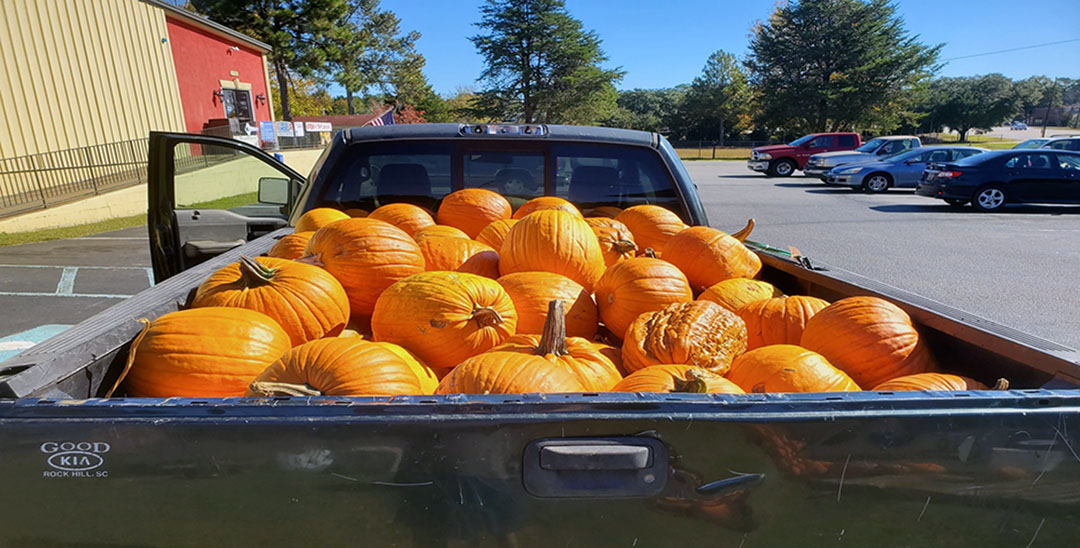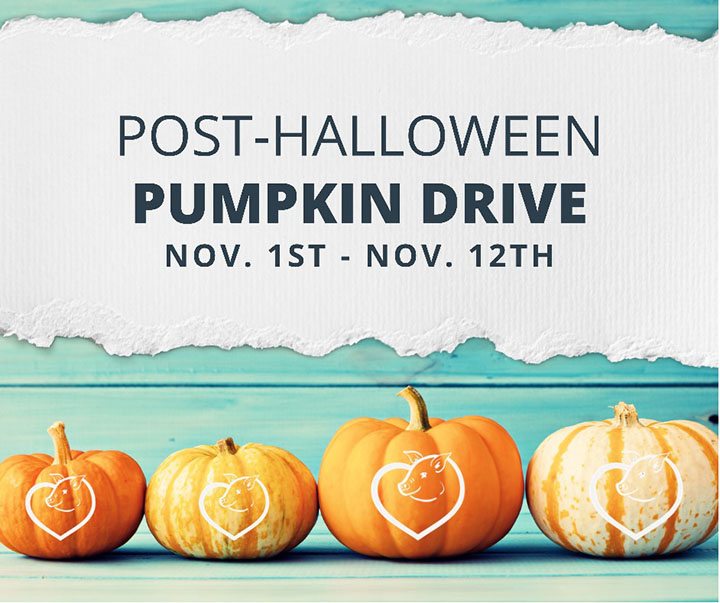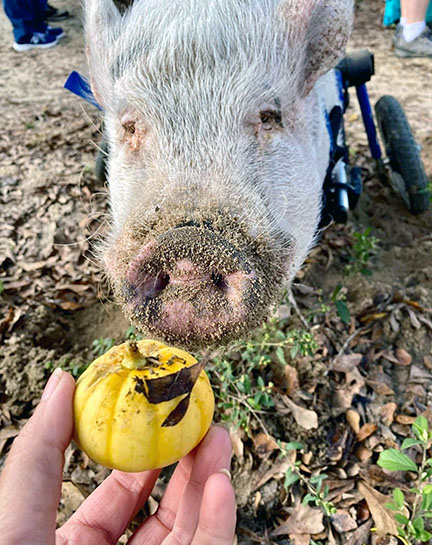A truckload of pumpkins donated from the patch behind a Lexington True Value Hardware were just one of the deliveries to Cotton Branch Farm Sanctuary last year. (Photos courtesy of Cotton Branch Farm Sanctuary)
After the candy is cleared and the fake cobwebs put away for another Halloween season, your jack-o’-lantern sits sagging and rotting for all your neighbors to see.
Several Midlands organizations can help you figure out what to do with your now-more-stinky-than-spooky jack-o’-lantern.
The United States produces more than a billion pounds of pumpkins every year, according to the U.S. Green Chamber of Commerce. The sudden increase of pumpkins rotting during the holiday season can cause environmental pollution. But as the saying goes, one man’s trash is another man’s treasure.
Cotton Branch Farm Sanctuary in Batesburg-Leesville, S.C., has more than 200 rescued farm animals — specifically pigs — to feed. When fall comes, Board President Joshua Carpenter has the pigs’ menu set.
“We could go through hundreds of (pumpkins),” Carpenter said. “The pigs will eat them everyday because they’re healthy for them, and they eat the entire pumpkin — inside and out.”
Since pumpkins are good for a pig’s digestive system, the farm used to give them to the pigs as treats. In 2019, pumpkins became a regular part of the pigs’ fall diet after people became enthusiastic about a social media post of the pigs loving the seasonal squash. The farm became a pumpkin dump.
“We’ve had some people where they’ll go around their neighborhood and collect all the pumpkins,” Carpenter said. “Now we’ll go outside, and there’ll just be a pumpkin sitting at the office or sitting outside the gate when people are done with decorating with them.”
Carpenter said the farm will take pumpkins in any stage of decomposition — as long as they’re not painted. The pigs can’t eat the pumpkins that are too far gone, but the farm still uses them for composting.
After a few years of composting, pumpkins have started growing in the compost field.
“It’s like the gift that keeps on giving,” Carpenter said.
Clinton Sease Farm in Lexington has a pumpkin patch for locals. The farm doesn’t let the leftover pumpkins go to waste at the end of the season, either.
“I’ve got animals, so my problem is easily solved,” Clinton Sease, the farm’s owner, said. “My cows, my pigs, my donkeys, my ducks — they all love them.”
If you don’t have a farm animal to donate your pumpkins to, Shirley Sease said you can eat it yourself.
“Right before they start deteriorating, … make pies and muffins and pancakes,” Shirley Sease said.
Those who don’t want to eat or donate their pumpkins shouldn’t fret about throwing them in the trash, Lexington County Solid Waste Management Director David Eger said.
Pumpkins are considered food waste, and food waste comprises about 22% of all waste disposed of in landfills, according to Laura Rankin, a public information officer of the Department of Health and Environmental Control. Though food waste does generate methane, the methane can be used as a renewable energy, for example, through the Richland County landfill, where Lexington send all its food waste, Eger said.
“They have a collection system there,” Eger said. “They pull off the methane and they utilize it within their vehicles. They also may sell some of the methane to the gas companies as well.”
Lexington County isn’t able to take food waste yet, but through a new partnership with Atlas Organics to upgrade the facility, that may change by next year.
“Ultimately, we may (take) pumpkins,” Eger said.




